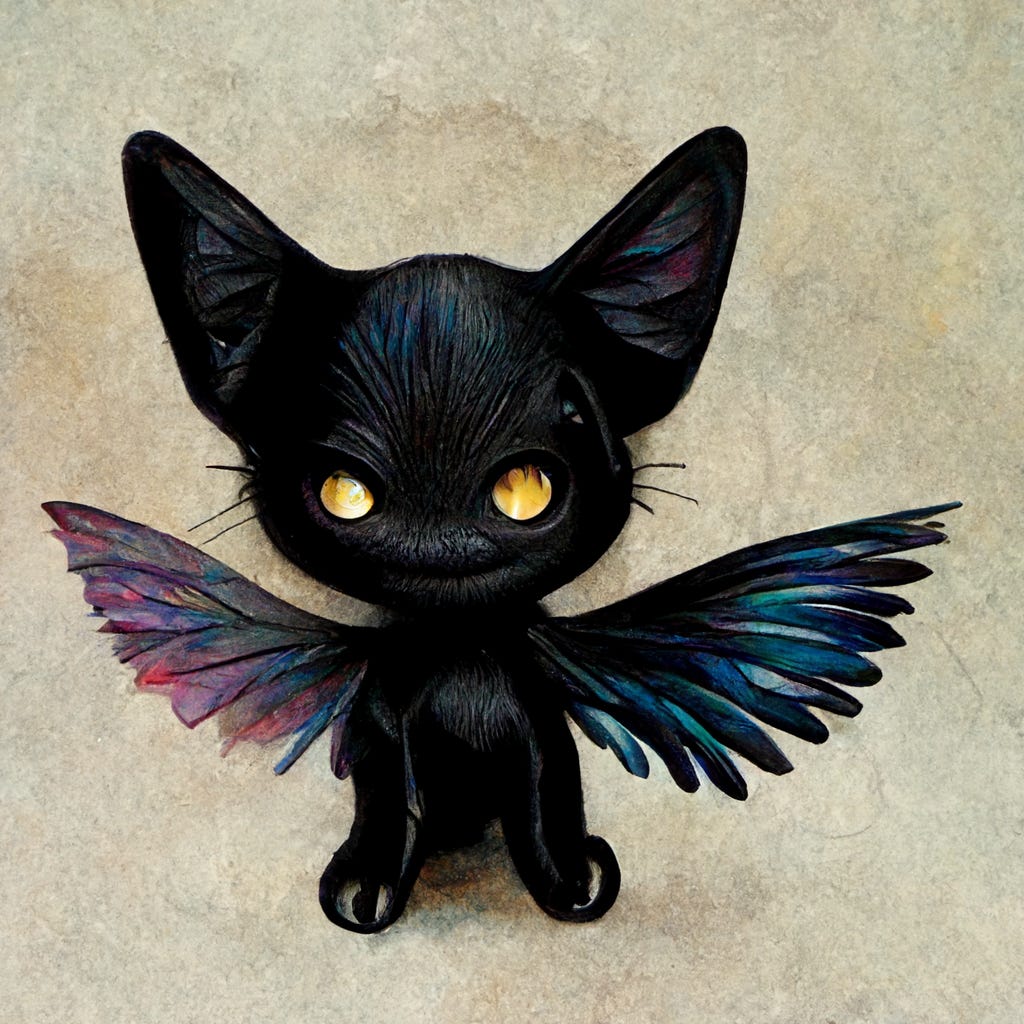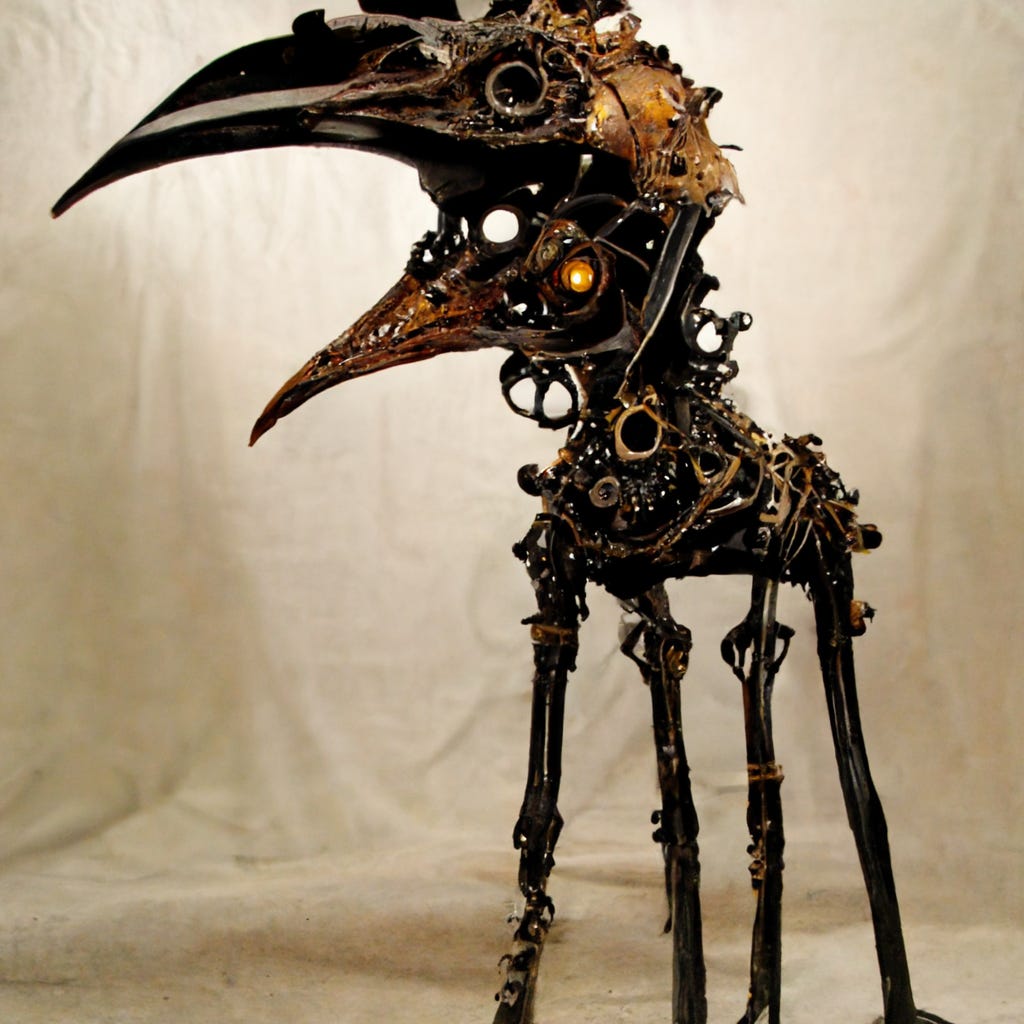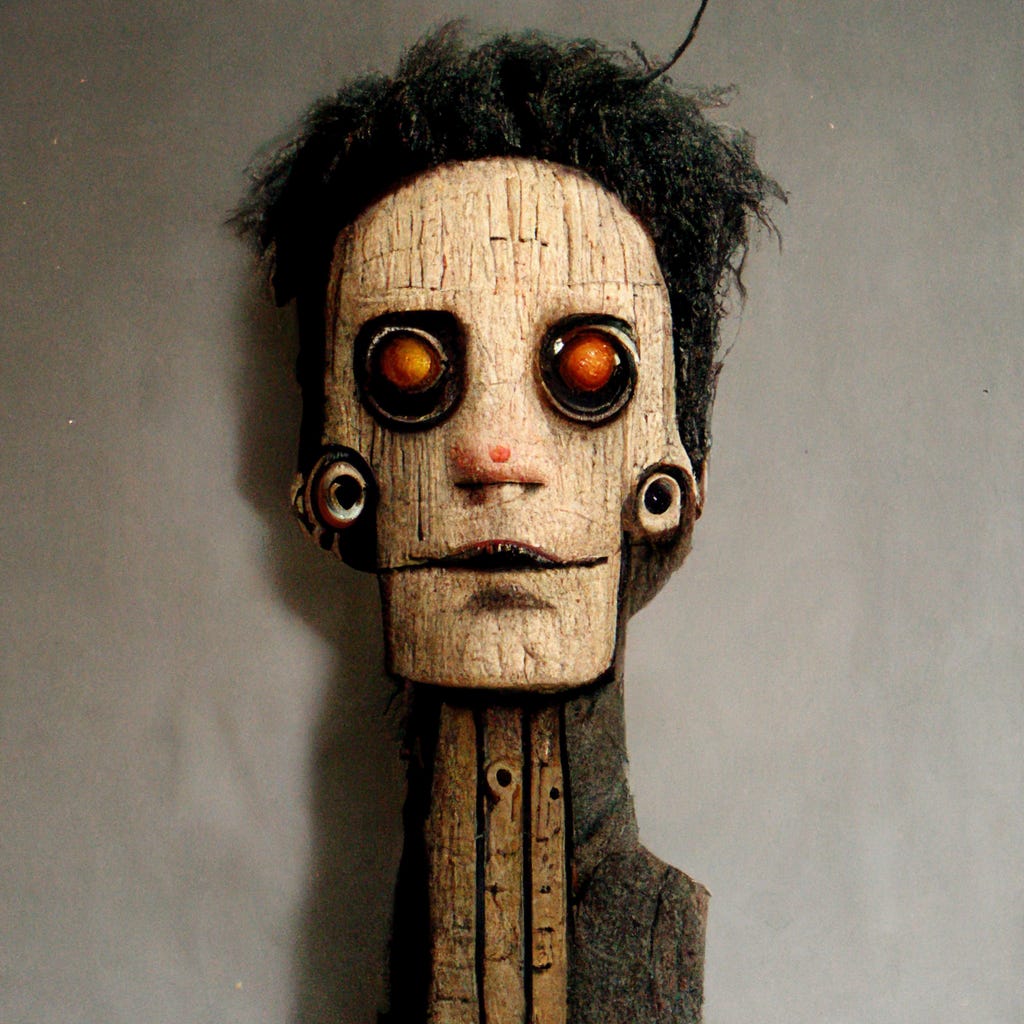Starting out on a new (Mid) journey
Using an AI image generator tool to create artwork for fiction writing
Welcome to Story Cauldron, where I share updates about my writing, observations about storytelling, and occasionally my own fiction. This time around, I wanted to tell you about an exciting new tool I just tried out over the weekend that may well revolutionize how I approach my writing, character development, and worldbuilding.
Like many writers, when I create stories, I often visualize scenes in my head before committing the ideas to words on a page. When I write about the “normal world,” this is relatively easy for me, and I can easily imagine the interaction between characters or the emotions someone might feel in a given situation.
When I am inventing entirely different worlds, with creatures or places that are unlike our own, I tend to struggle. In those instances, such as when I write my Favor Faeries series, I have a difficult time holding the images of my faerie world in my head as I work through the action and dialogue. Even during revision, it’s difficult for me to fully visualize my creatures or places before getting everything down in words.
Some writers might sketch characters, creatures, or settings on paper, but I’m not a skilled visual artist and can’t translate mental images to paper. Others might use Google image searches to “cast” their characters and settings with photos of real-life people and places. While I’ve tried that (and have the Pinterest boards to prove it!), I have also spent many fruitless hours never finding anything that is quite what I imagined.
Enter Midjourney
According to Wikipedia, Midjourney “is a research lab that produces an artificial intelligence program that creates images from textual descriptions, similar to OpenAI's DALL-E.”
In simpler terms, Midjourney is an artificial intelligence ‘bot’ that creates art on demand using text-based prompts. You access it through a Discord server, and although the first few images are free, to run more (and trust me, you’ll want to), you can upgrade to a $10/month limited, or a $30/month unlimited, package.
The amazing thing about Midjourney is that you can do anything you want with your images. Use them for a book cover, print them on coffee mugs, make them into posters, put them on iPhone cases. There are limited exceptions (you have to purchase a corporate account to use them for large companies), but otherwise, they’re yours. However, you can also use everyone else’s—although you are free to do what you want with your artwork, you do not have exclusive rights to the images under normal circumstances.
How I used Midjourney as a tool for my writing
I’ve been hitting a wall as I try to finish book 2 of my Favor Faeries series. Part of the issue was my inability to ‘see’ my scenes. I had built a complex world with unique creatures, and my characters enter this world at the end of the story, so I have been trying to juggle major plot points and worldbuilding simultaneously.
Imagine you have a paper shredder and you try to feed it too many pages at once. The whole mechanism jams up, and the machine freezes. That’s been my brain (though I don’t think I was shredding anything, but these days it’s hard to tell!)
Over the weekend, I decided to give Midjourney a try, and it was a major breakthrough for me.
With Midjourney, I put in prompts that more or less approximated my characters and creatures, and like a magical Polaroid, I waited 60 seconds, and out popped something approximating what was in my brain.
It sounds crazy, but it really was just like that.
For example, I described one of my faerie creatures as having stilt-like legs like a giraffe, but with a massive head shaped like a crow. To generate such a creature, I tried the following prompt:
creature steampunk robotic giraffe crow's head skeletal body scissorhands
It took a number of attempts, but I eventually ended up with the following:
For another, the prompt I gave was:
creature tall marionette skinny uncanny human face wooden rivets machine
And this is what I got:
So far so good. It’s ridiculously easy to create imaginary creatures with Midjourney. But believe it or not, Midjourney also helps generate human characters. The following are four images I created that more or less match how I imagined four of my main characters. My teenage protagonists Jenny and Holden are the top two, while my witches Magalie and Esperanza are below.
These images themselves aren’t perfect, and have a few weird artifacts or blemishes (for example, there’s a weird ghosting effect on Magalie’s orange jacket) but that’s okay. I don’t currently have plans to use them for anything other than reference, so I think of them all as sketches. Of course, they could be further tweaked in Photoshop, but for right now, they are more than enough for my writer's brain.
Other kinds of Midjourney artwork
You can do more than just create character art with Midjourney. I’ve seen some lovely book covers and other illustrations. You can also generate beautiful or bizarre artwork. The image at the top of this post was me riffing on Monet’s waterlilies, while the image below was my imagining of gargoyles attacking people in the rain in front of Notre Dame Cathedral (I really just wanted them to carry umbrellas, but I couldn’t quite get the results I wanted, so I went darker!)
As you can see, even the sky isn’t really a limit!
Do you want to go on your own Midjourney?
Perhaps I’ve intrigued you, and you’re ready to give it a shot. Getting into Midjourney isn’t difficult. Here are the basics for how to access it.
You need a (free) Discord account if you don’t already have one. Discord is chat software not unlike Slack or old-school IRC, and individuals and groups can set up their own servers for their communities. (In this sense, Midjourney is just another community).
Sign up for the beta at Midjourney.com. From there, it should send you to Discord to accept the invitation. If not (and this happened to me), try this link to access the Midjourney discord: https://discord.com/invite/midjourney
In Discord, navigate to the Midjourney server (it has an icon that looks like sails or shark fins) and look for the “Newbie" bot channels.
In the channel, you will see a lot of images as you scroll by, with the prompt used at the top. You can generate your first one by typing /imagine (the word ‘prompt’ should autofill) and then whatever words you want to try.
You will get 4 images, representing 4 different interpretations of that prompt. Note that others are also running requests so you might have to scroll to find yours once it’s complete.
If you like any of them, you can choose to get variations (V) or upscaled versions (more details) with U. They are numbered 1, 2, 3, and 4 with 1 & 2 in the first row and 3 & 4 in the second row. So if you kind of like the third image but want to see what else the bot can do, click on V3. If you like the 2nd one a lot and want to see it with more details, click on U2.
When logged in, https://www.midjourney.com/app/ will take you to your own Midjourney page with downloadable versions of everything you have created.
To give you an idea of what it looks like, here is a quick screenshot of two random users’ prompts and results, along with the prompt line at the bottom:
(I already typed ‘/imagine prompt’ and if I were ready to generate a new set of images, I would continue from there with my text prompt.)
Having said all of this, I fully acknowledge that these steps don’t do much to explain how Midjourney works, or how to refine your options to get the best results. They just get your foot in the door. I’ve only been using it for a couple of days, and already I’ve found that trial and error got me pretty far, as well as copying some of the other users’ prompts (adding my own specifics). And when I got stuck or wanted to understand a command someone else used, I turned to Google.
Beware of Midjourney
Before I wrap up, I should include one very important caveat: Midjourney can be addicting. There is no such thing as just a few images. Once you get going, you’ll probably want to throw every kind of prompt you can think of into the bot. The next thing you know, you’ll be posting them on Facebook or Twitter, using them to illustrate articles, and finding art that you want to turn into a poster. So as a friend pointed out, this is not a tool to try out when you’re up against a hard deadline.
It can also be challenging to get the bot to create what you’re looking for. I’m just starting on my Midjourney, and I already want to settle down with some tutorials so I can get better at it (and maybe help others).
But on the whole, I think it’s a fantastic tool and a harbinger of even more powerful AI generators to come. And maybe most importantly of all, it’s a lot of fun to use.
Have you tried Midjourney? Let me know in the comments. I’d especially love to hear about any tricks you’ve discovered along the way.












You sure have intrigued me, Jackie—this I soooo cool! Thanks for sharing with us!
Great, easy to grok overview. I will be sharing this with more than a few folks!